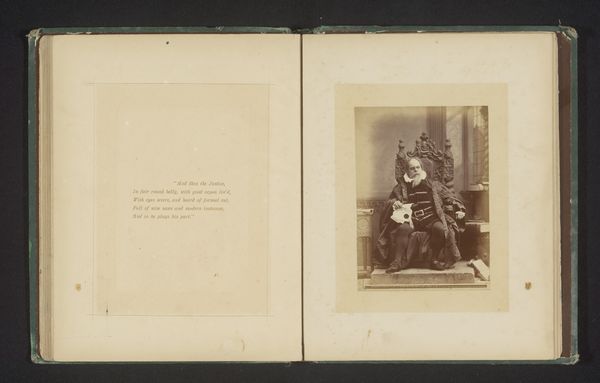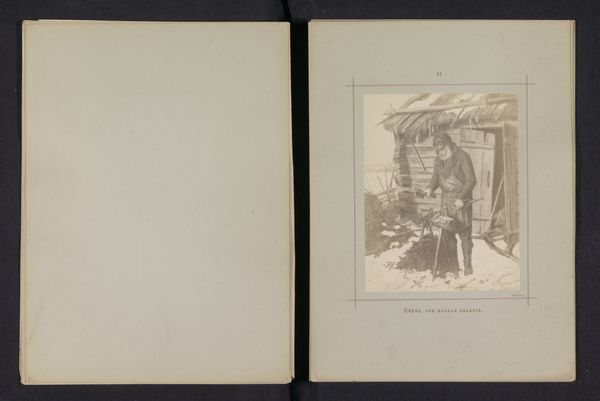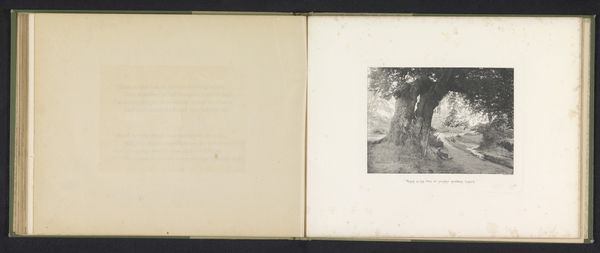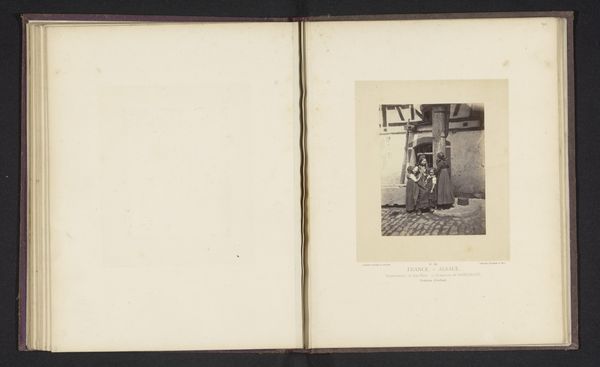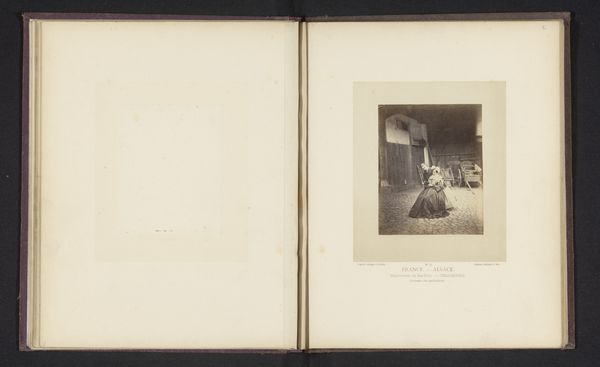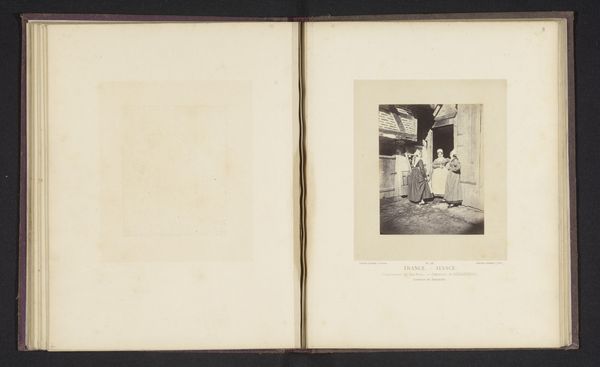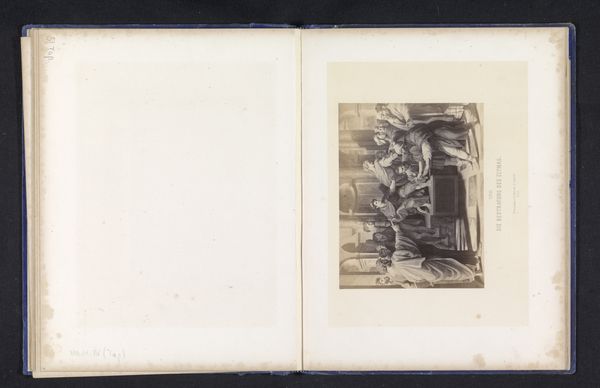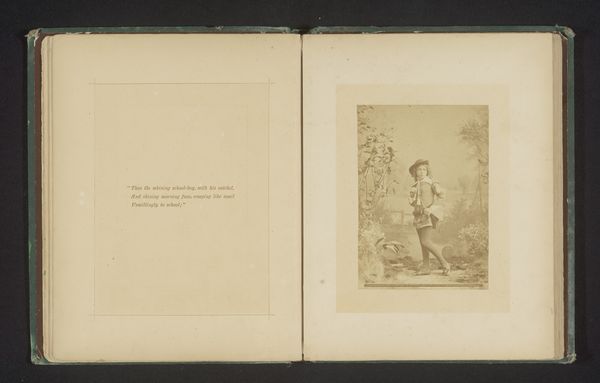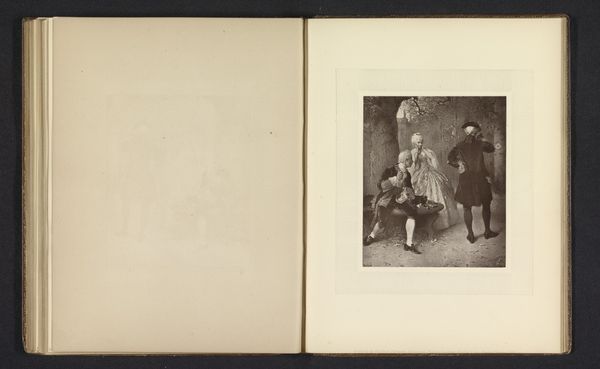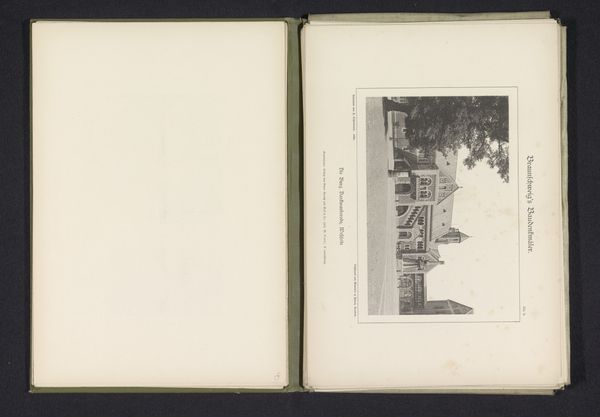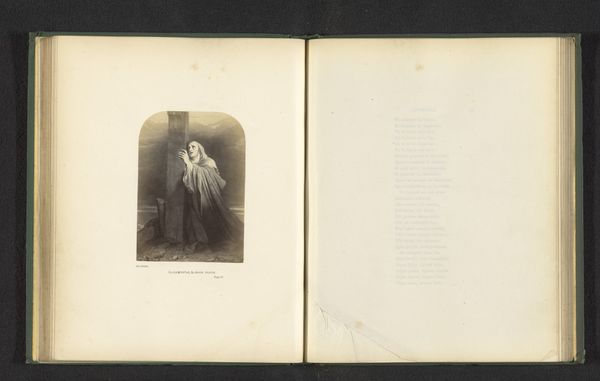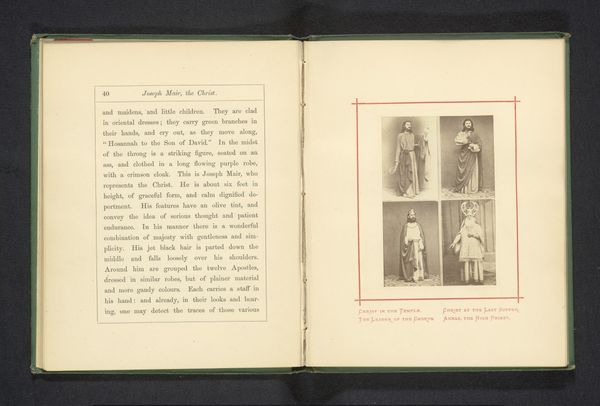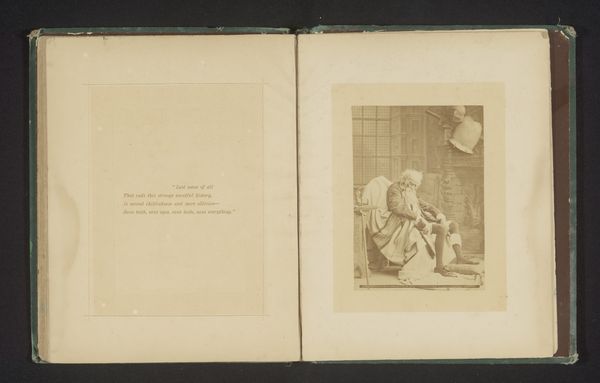
Oudere man uit The seven ages of man - As you like it van William Shakespeare before 1877
0:00
0:00
paper, photography
#
portrait
#
aged paper
#
homemade paper
#
paperlike
#
light coloured
#
sketch book
#
paper texture
#
paper
#
photography
#
personal sketchbook
#
thick font
#
paper medium
#
historical font
Dimensions: height 137 mm, width 99 mm
Copyright: Rijks Museum: Open Domain
Curator: Before us, we have "Oudere man uit The seven ages of man - As you like it van William Shakespeare" by J. Landy, dating from before 1877, presented in what appears to be an album or sketchbook. Editor: My immediate response is one of melancholic observation. The sepia tone imbues the scene with a profound sense of the past, and the composition, dominated by the figure leaning on a cane, speaks of frailty. Curator: Indeed, the photograph presents a compelling study in contrast. Consider the stark framing around the image—its borders neatly delineating figure from ground. Then there's the figure itself, staged within a receding architectural space which leads the eye deeper into the picture plane and perhaps into its narrative depth as well. Editor: And that framing is crucial. The visible album binding points to the material support of this image—that this exists as a manufactured object made by somebody; it also signals intentionality. This photograph wasn’t merely taken but selected, arranged, and preserved. What does that curation reveal? What value did someone place on this representation of aging and Shakespearean narrative? Curator: It begs us to reflect on temporality and representation, particularly as manifested through the artistic techniques available to Landy. We note, too, the presence of the adjacent text, carefully lettered to engage directly with the visual. Semiotics become useful here in teasing out its intended audience. Editor: I’m curious about the actual physical properties: the type of paper, the specific photographic chemistry that created that faded coloration. How did those available materials in that historical moment dictate the artistic choices, the very atmosphere we’re perceiving? And also: what was the context of labor, and how was it performed and consumed to realize this kind of artistic vision, and what societal and professional conventions or trends underpinned it at the time? Curator: Questions well posed. Such engagement with art brings with it an investigation that is vital and important for us to undertake to connect with Landy’s piece beyond initial aesthetic impressions. Editor: Agreed, this image invites a necessary contemplation on how material culture and artistic rendering inform our interpretation of both individual artworks and collective histories.
Comments
No comments
Be the first to comment and join the conversation on the ultimate creative platform.
